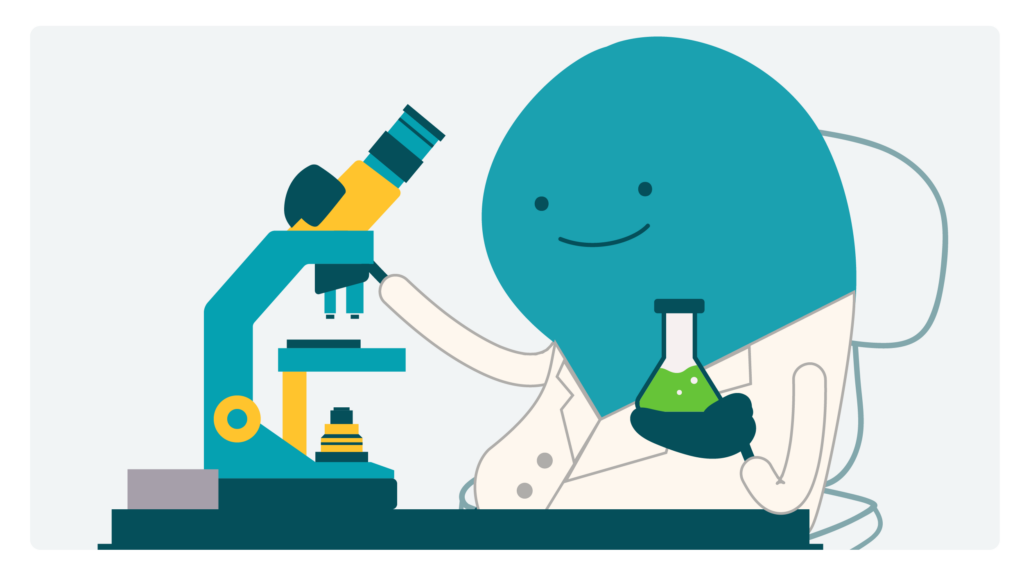
Dear readers, a few weeks ago, we wrote about why science-based vaccine recommendations matter. As health communicators, it’s our job to translate complex health topics into plain language — especially when they’re dominating the headlines.
So today, we’re taking a step back to explain how vaccines are developed, tested, and approved in the U.S. And we’re sharing a few of our favorite expert-approved resources to help you talk about this process with your audiences. Let’s dig in!
1. It all starts in the lab.
Researchers identify a disease-causing organism, like a virus or bacteria, and explore how to train the immune system to recognize and fight it. It takes years of thorough research in the lab and testing in animals to create a vaccine that’s likely to be safe and effective in people.
2. Then clinical trials begin.
If early testing in the lab looks promising, researchers move on to human clinical trials — that is, testing the vaccine in people. These trials happen in phases, each with more volunteer participants than the last. The goal of clinical trials is to carefully test the vaccines for safety, dosage, and effectiveness.
- Phase 1: Safety check to look for potential side effects in a small group (between 20 and 100 people)
- Phase 2: Testing dosages, effectiveness, and side effects in a bigger and more diverse group (between 100 and 300 people)
- Phase 3: Further safety and effectiveness testing in thousands of people, often comparing the vaccine to a placebo, which is given to participants just like the vaccine but doesn’t have any active ingredient in it
If scientists see that the vaccine causes side effects or doesn’t seem effective, they can cancel the clinical trial at any time. If a vaccine makes it through all 3 phases, it’s very likely safe and will work well for everyone.
3. Next up is review and approval.
Food and Drug Administration (FDA) experts look at all clinical trial results to decide whether the vaccine is safe, effective, and ready for use. No vaccine gets approved by the FDA without a thumbs-up from these highly trained and experienced scientists and regulators.
4. Independent experts make recommendations.
After FDA approval, another group — the Advisory Committee on Immunization Practices (ACIP) — weighs in. This CDC advisory committee reviews the data and makes recommendations about who should get the vaccine and when. They’re a group of unpaid, independent experts (no industry ties allowed!). That means they can make unbiased recmomendations about how to use vaccines to keep people healthy.
5. Finally, ongoing safety monitoring starts.
Once a vaccine is out in the world, the work isn’t done. Scientists continue to monitor its safety through systems like:
- Vaccine Adverse Event Reporting System (VAERS), where anyone can report side effects
- Vaccine Safety Datalink (VSD), which tracks data from millions of patients in real time
If experts see a pattern of unexpected side effects (called a “safety signal”), they investigate immediately — and adjust recommendations if needed.
There are many excellent, trustworthy resources you can use to explain the vaccine development process in plain language. Here are a few to check out:
- World Health Organization: How are vaccines developed and produced?
- Public Health Communications Collaborative: Vaccine Development, Safety, and Effectiveness
- Children’s Hospital of Philadelphia: Vaccine Science: Process of Vaccine Development
The bottom line: Developing new vaccines is a complicated process — but explaining it doesn’t have to be.
Copy/paste to share on social (and tag us!): Explain vaccine development in #PlainLanguage to boost public confidence in the process. Check out CommunicateHealth’s tips and resources: https://communicatehealth.com/wehearthealthliteracy/breaking-down-the-vaccine-development-process/
Browse recent posts